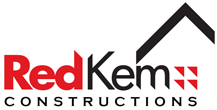Undertaking the creation of a new home or diving into a substantial renovation project is a thrilling but intricate journey. A pivotal element that can significantly shape the outcome of your endeavour is the art of effective communication with your builder. A transparent and candid exchange of ideas can go a long way in ensuring that your aspirations and expectations are well-understood, resulting in a streamlined construction process and a gratifying final product. In this article, we will impart invaluable insights and guidance on the art of communicating effectively with your builder.
1. Establishing a Firm Foundation:
Before the construction commences, it is imperative to lay a solid foundation of communication with your builder. This involves comprehensive discussions about your objectives, preferences, and anticipations. Take ample time to express your vision clearly, and encourage your builder to do the same. A shared understanding right from the beginning is vital to prevent misunderstandings and conflicts later on.
2. Sustain Consistent Contact:
Maintaining a steady line of communication with your builder is of paramount importance throughout the construction process. Schedule regular meetings or check-ins to monitor progress, address any concerns, and make necessary decisions. Depending on the scale of your project, these meetings could range from weekly to bi-weekly. A consistent flow of communication keeps you well-informed, offers you a platform to provide feedback, and allows for timely adaptations when required.

3. Precision and Attention to Detail:
When communicating with your builder, precision and attention to detail are your allies. Steer clear of vague statements and instead, provide explicit instructions or requests. For instance, rather than saying, “I want a larger kitchen,” specify the desired dimensions or offer examples of the features you wish to incorporate. The more exacting you are, the better equipped your builder is to grasp and fulfill your expectations.
4. Everything in Black and White:
Verbal exchanges are indispensable, but it is equally vital to document everything in writing. Record all agreements, modifications, or decisions made during meetings or conversations. This practice not only creates a documented history of the project’s evolution but also serves as a reference point for both parties. Written communication curtails the likelihood of misunderstandings or overlooking critical details.
5. Active Listening:
Communication involves two-way traffic, so actively listen to your builder’s insights and expertise. Builders possess invaluable knowledge and experience in their field, which can significantly enhance the overall outcome of your project. Foster open dialogue, pose questions, and seriously consider their suggestions. A collaborative approach nurtures a positive working relationship and heightens the prospects of a successful construction journey.
6. Addressing Concerns Promptly:
Should any concerns or issues crop up during the construction process, it is essential to deal with them promptly in conjunction with your builder. Effective communication encompasses timely troubleshooting and the identification of mutually agreeable solutions. Ignoring or deferring the resolution of problems can lead to avoidable delays, budget overruns, or an unsatisfactory final result. Uphold an open line of communication to tackle concerns constructively and proactively.
7. Respect for Professional Boundaries:
While effective communication is pivotal, it is also crucial to respect professional boundaries. Acknowledge that builders juggle multiple projects and commitments, so be mindful of their time and workload. Steer clear of excessive demands or frequent interruptions, and be appreciative of their expertise and judgment. An approach that is respectful and professional establishes trust and facilitates effective cooperation.
In essence, effective communication is the linchpin of a fruitful partnership between homeowners and builders. By establishing a robust foundation, maintaining regular contact, adhering to precision and attention to detail, documenting decisions, actively listening, addressing concerns promptly, and respecting professional boundaries, you can ensure seamless communication throughout your construction venture. Remember, lucid and transparent communication paves the way for a harmonious working relationship and acts as a conduit to transform your vision into the home of your dreams.

 1300 002 102
1300 002 102 
